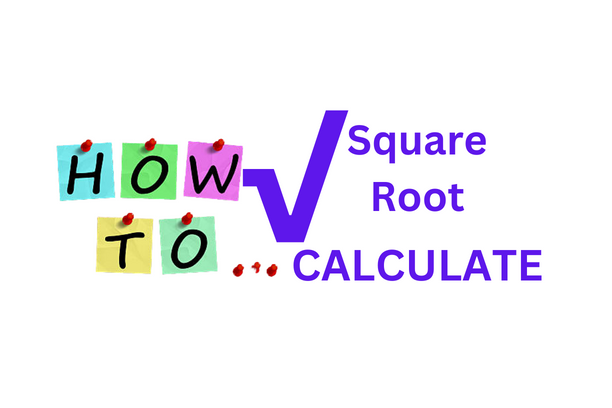Circles in Maths – Definition, Formulas, Properties, Examples
A circle is a shape consisting of all points that are an equal distance from a single point, called the center. The distance from the center to the edge of the circle is called the radius. The diameter of the circle is the longest distance across the circle, passing through the center.
To draw a circle, you can use a compass or a pair of compasses. The compass or compasses are adjusted to the desired radius, then the pencil point is placed at the center of the circle, and the compass is rotated around the center to create the circular edge.
Formulas:
- Area of a circle: π x (radius)^2
- Circumference of a circle: 2 x π x radius
- Diameter of a circle: 2 x radius
Properties:
- All points on the circumference are equidistant from the center.
- The diameter is the longest distance across the circle.
- Circles are always round and have no corners.
Examples: The wheels of a car, a round table, the sun, a donut
Parts of a Circle
Center: The center of a circle is the point at the middle of the circle, equidistant from all points on the circumference.
Radius: The radius of a circle is the distance from the center of the circle to any point on the circumference.
Diameter: The diameter of a circle is the distance across the circle, passing through the center. Or The longest distance across a circle, passing through the center. It is equal to twice the radius.
Formula: D = 2 * r.
Circumference: The distance around the edge of a circle.
Formula: C = 2 * π * r, where r is the radius of the circle.
Area: The amount of space inside a 2-dimensional shape.
Formula (for a circle): A = π * r^2
Chord: A line segment that connects two points on the circumference of a circle.
Arc: A portion of the circumference of a circle.
Formula (for the length of an arc): l = r * θ, where θ is the central angle in radians.
Sector: A region bounded by two radii and an arc of a circle.
Formula (for the area of a sector): A = (θ/360) * π * r^2, where θ is the central angle in degrees.
Tangent: A straight line that touches a curve at a single point but does not cross it at that point.
Segment in a Circle: The area enclosed by the chord and the corresponding arc in a circle is called a segment.
There are two types of segments – minor segment, and major segment.
Sector of a Cirlce: The sector of a circle is defined as the area enclosed by two radii and the corresponding arc in a circle.
There are two types of sectors – minor sector, and major sector.
Properties of Circle
Properties of Circles
The important basic properties of circles are as follows:
- The outer line of a circle is at equidistant from the center.
- The diameter of the circle divides it into two equal parts.
- Circles which have equal radii are congruent to each other.
- Circles which are different in size or having different radii are similar.
- The diameter of the circle is the largest chord and is double the radius.
A circle has several properties, including:
- Symmetry: A circle is symmetrical about its center, meaning that for any line passing through the center, the distances from the center to the circumference on either side of the line are equal.
- Circumference: The circumference of a circle is the distance around the edge of the circle and can be calculated using the formula C = 2 * π * r, where r is the radius of the circle.
- Area: The area of a circle can be calculated using the formula A = π * r^2, where r is the radius of the circle.
- Chords: Any two points on the circumference of a circle can be connected by a chord.
- Tangent: A tangent to a circle is a straight line that touches the circle at exactly one point.
- Secant: A secant is a line that intersects a circle at two points.
- Diameter: A diameter of a circle is a line segment that passes through the center of the circle and has its endpoints on the circumference of the circle.
- Radius: The radius of a circle is a line segment that extends from the center of the circle to a point on the circumference of the circle.
- Concentric Circles: Two or more circles are said to be concentric if they have the same center.
- Congruent Circles: Two circles are said to be congruent if they have the same radius.
- Arc: An arc is a portion of the circumference of a circle.
- Central Angle: The central angle of a circle is an angle formed by two radii that connect the center of the circle to the points on the circumference.
- Inscribed Angle: An inscribed angle is an angle formed by two chords that intersect within a circle.
- Cyclic Quadrilateral: A quadrilateral is said to be cyclic if all of its vertices are on the circumference of a circle.
The diameter of a circle has several properties, including:
- Length: The diameter of a circle is the longest distance across the circle and is equal to twice the radius of the circle.
- Symmetry: The diameter of a circle bisects the circle into two equal halves, providing a line of symmetry.
- Chord: The diameter of a circle is also a chord of the circle, passing through the center of the circle.
- Circumference: The diameter of a circle is used to find the circumference of a circle. The formula for the circumference of a circle is C = π * D, where D is the diameter.
- Central Angle: The diameter of a circle forms the longest central angle in the circle.
- Conjugate Diameters: Any two diameters in a circle are always conjugate diameters, meaning they intersect at right angles at the center of the circle.
Circle Formulas
Let’s see the list of important formulae pertaining to any circle.
- Area of a Circle Formula: The area of a circle refers to the amount of space covered by the circle. It totally depends on the length of its radius → Area = πr2 square units.
- Circumference of a Circle Formula: The circumference is the total length of the boundary of a circle → Circumference = 2πr units.
- Arc Length Formula: An arc is a section (part) of the circumference. Length of an arc = θ × r. Here, θ is in radians.
- Area of a Sector Formula: If a sector makes an angle θ (measured in radians) at the center, then the area of the sector of a circle = (θ × r2) ÷ 2. Here, θ is in radians.
- Length of Chord Formula: It can be calculated if the angle made by the chord at the center and the value of radius is known. Length of chord = 2 r sin(θ/2). Here, θ is in radians.
- Area of Segment Formula: The segment of a circle is the region formed by the chord and the corresponding arc covered by the segment. The area of a segment = r2(θ − sinθ) ÷ 2. Here, θ is in radians.
SOLVE EXAMPLE
- Find the circumference of a circle with a radius of 4 cm. Solution: C = 2 * π * 4 = 8 * π ≈ 25.12 cm
- Find the area of a circle with a diameter of 10 cm. Solution: First find the radius (r = 10 / 2 = 5 cm). Then A = π * r^2 = π * 5^2 = 25 * π ≈ 78.5 cm^2
- Find the radius of a circle with a circumference of 20 cm. Solution: C = 2 * π * r, so r = C / 2 * π = 20 / 2 * π ≈ 3.18 cm
- Find the diameter of a circle with an area of 50 cm^2. Solution: A = π * r^2, so r^2 = A / π = 50 / π. Then r = √(50 / π) and d = 2r = 2 * √(50 / π) ≈ 9.7 cm
- Find the equation of a circle with center (4,5) and radius 3. Solution: (x – 4)^2 + (y – 5)^2 = 3^2, or (x – 4)^2 + (y – 5)^2 = 9.
- Find the equation of a circle that passes through the points (1,2), (2,3), and (3,1). Solution: Average the x and y values to find the center of the circle (2, 2), then use the distance formula to find the radius (√(2^2 + 0^2) = 2). Then the equation of the circle is (x – 2)^2 + (y – 2)^2 = 2^2 = 4.
- Find the length of an arc with a central angle of 120 degrees and a radius of 8 cm. Solution: An arc length is equal to the central angle (in radians) divided by 2 * π, multiplied by the circumference of the circle. So 120 degrees is equal to 120 * π / 180 radians, and the arc length is (120 * π / 180) / (2 * π) * 2 * π * 8 = 8 * 120 / 180 = 16 * 2 / 3 cm.
- Find the area of a sector with a central angle of 60 degrees and a radius of 5 cm. Solution: The area of a sector is equal to the central angle (in radians) divided by 2 * π, multiplied by the area of the circle. So 60 degrees is equal to 60 * π / 180 radians, and the area of the sector is (60 * π / 180) / (2 * π) * π * 5^2 = 5^2 * π * 60 / 360 = 25 * π / 9 cm^2.
- Find the equation of the tangent to a circle with center (3,4) and radius 2 at the point (5,6). Solution: The slope of the line connecting the center of the circle to the point on the circumference is (6 – 4) / (5 – 3) = 2 / 2 = 1. Then y – 4 = m(x – 3), so y = x + 1. The equation of the tangent is y = x + 1.
- Find the point where a line with equation y = 2

